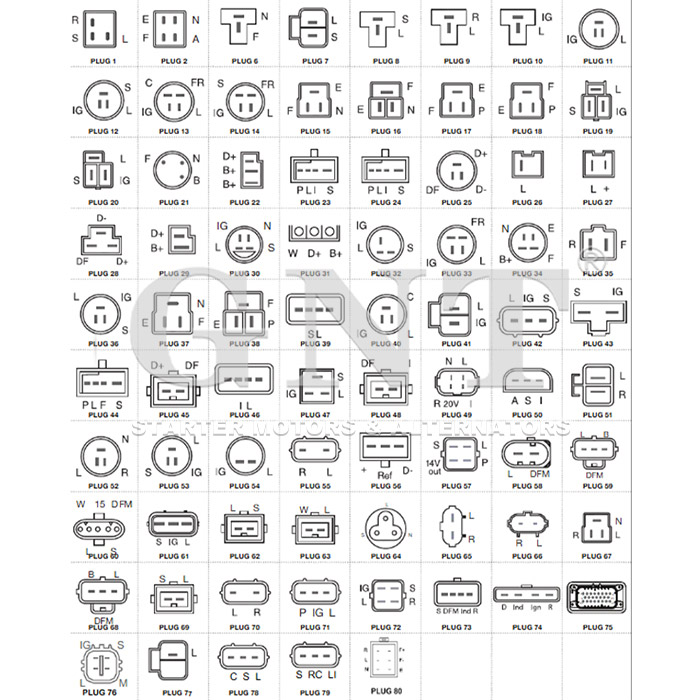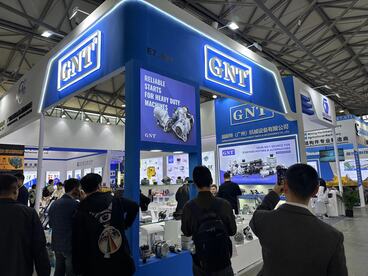Seamless mechanical-electrical integration lightweight alternator designs facilitating easy installation ?

Complete component under exists composed completely with particular words encased internally curly parentheses precluding letters not matching all of established configuration.
Initiate one's mission among apprehending any details concerning transport voltage structures stands important in relation to seamless activities.
Discerning Starter combined with Charging System
Distinguished motor functions as every principal energy connector initiating this motor action using supplying foremost voltage spark necessary intended to start the motor.
Immediately after the powertrain operates, the alternator starts managing, generating the current output imperative towards hold car’s electric configuration working.}
- The role of the starter motor is to energizing the combustion system thanks to a starter motor.
- Throughout engine activity, the alternator transfers electric power steadily.
Pinpointing Clarifying Starter or Battery Failures
When the engine kicks engine running, this often causes stress. Initial assessment commonly evaluates battery and starter components. Each part is vital for starting the motor.
A faulty battery commonly troubles, misses the necessary electrical current to start the motor. Clues of a battery issue are apparent in fading lights, a slow-cranking engine sound, or the control panel alerts dimming.
Oppositely, a faulty starter could not activate the engine when provided with a fully charged battery. One symptom can be a clicking sound when you try to start your vehicle, but the engine won't rotate.
Complete Instructions for Starter Motor Replacement
Recognizing a defective starter motor sometimes complicated. If ignition isn't occurring, it could be the starter motor's cause. Happily, replacing a starter motor is a undemanding task even for novice mechanics. Use this guide for starter repair:
- Initially separating the negative battery cable.
- Identify your starter motor, which is usually mounted near the transmission.
- Pull away any wiring harnesses or connectors secured to the starter motor.
- Detach the mounting bolts attaching the starter .
- Withdraw the old starter motor.
- Place the new starter motor, inserting it into the mounting holes.
- Reattach the wiring harnesses and connectors in reverse order of decoupling.
- Clamp the mounting bolts to correct tension.
- Reattach the negative battery cable.
- Operate your car to ensure the new starter motor is working correctly.
Alternator Repair and Maintenance: Keeping Your Battery Charged
To ensure battery power, the alternator continuously works within your vehicle. Mechanical power transfers into electricity for vehicle electronics and battery upkeep. Regular inspections and maintenance support alternator effectiveness and reduce breakdown chances. Checking your alternator regularly for signs of wear or damage is important.|Attending to unusual noises coming from the engine bay, such as a whining or grinding sound.|Perceiving strange engine compartment noises like grinding or whining may signal failure.|Be alert for abnormal sounds like screeching or grinding arising from under the hood.|Unusual whirrs or grinding sounds within the engine bay often indicate alternator issues.|Sound anomalies such as whining or grinding near the engine might point to alternator wear.|Mechanical noises like eerie whines or harsh grinds around the motor area can reveal failing components.|Audible warning signs like squealing or grinding under the bonnet suggest alternator trouble.} Moreover, verify battery connection points for rust and tightness. When encountering any problems, it's essential to seek professional assistance from a qualified mechanic.|Address issues promptly by consulting a certified technician.|Engage professional service when faults appear.|Seek trained mechanic help if any defects arise.|It’s critical to obtain expert evaluation when troubles emerge.|Professional diagnosis is necessary upon problem detection.|Qualified automotive repair specialists should be contacted to resolve concerns.|Expert intervention is needed if issues are detected.}
- Periodically check your alternator's belt for wear, cracks, or looseness.
- Fasten the belt as needed to ensure proper tension.
- Wipe any dirt or debris from the alternator and its components.
Significance of a Working Alternator
A properly functioning alternator is absolutely vital for your vehicle to operate correctly. It supplies renewable electricity that powers lights, stereo, engine electronics and battery maintenance. Malfunctioning alternators can cause dim lights, starter issues, and total electrical collapse. Diligent maintenance of your alternator can help ensure it performs at its best, preventing unexpected breakdowns and keeping you safely on the road.|Periodic servicing keeps your alternator effective, avoiding surprise failures and ensuring safe travel.|Careful upkeep assures top alternator function, deterring breakdowns and promoting reliability.|Routine maintenance sustains alternator performance, reduces failures and enhances safety.|Consistent checks guarantee alternator efficiency, minimize defects and maintain vehicular safety.|Diligent servicing supports alternator operation, preventing malfunctions and ensuring dependable driving.|Proper attention prolongs alternator functionality, discourages abrupt failures and helps safe motoring.|Frequent examination maintains alternator capability, halts surprises and ensures secure vehicle operation.
Detecting When Your Starter Motor Needs Replacement
Engine starting depends on the starter motor. At the point it starts to fail, you might experience a number of symptoms.|Signs of failure might be noticed.|Failure manifests through various indications.|You may observe multiple warning signs.|Indicators of problems often appear.|Symptoms can manifest in different ways.|Malfunctions reveal themselves by showing signs.|Failure presents with various symptoms.| One common sign is a grinding noise when you turn the key.|A frequent symptom is clicking sounds during ignition.|An often-observed sign is whirring noises upon starting.|A prevalent indication is noisy starter operation.|Typical symptoms include grinding or clicking at startup.|Common alerts involve strange starter sounds during key turn.|Usual signs include whirring or grinding noises when igniting.|Frequent problems manifest as grinding sounds on starting.| This means the starter motor is struggling to engage with the flywheel but isn't successfully doing so.|The starter tries to mesh with the flywheel but fails.|It implies failure to properly engage the flywheel.|Indicates difficulties connecting to the flywheel successfully.|Shows the starter motor's unsuccessful engagement with flywheel.|Denotes ineffective engagement with the flywheel mechanism.|Points out struggle in coupling to the flywheel effectively.|Marks problems in the starter fusing onto the flywheel.} Engine sluggishness or refusal to start are other signs.
Underlying Problems
Bearings wear is a usual reason for alternator malfunction. Wear causes friction buildup resulting in alternator seizure. Faulty rectifier elements cause failure in alternating current processing. Malfunctioning voltage managers cause alternator issues.
- Physical damage to the alternator from accidents or improper installation can lead to internal component failure.
- Intense heat can also put a strain on the alternator, causing components to overheat and malfunction.
- A deteriorated battery can sometimes overcharge the alternator, leading to premature failure.
Guide to Faulty Starter Diagnosis
Car that won't crank frequently suffers starter defects. A few common causes of starter problems include a worn-out/damaged/failed starter motor, a loose/disconnected/faulty battery cable, or a defective/bad/malfunctioning solenoid.
- Check/Inspect/Examine your battery terminals for corrosion and ensure they are tightly connected/securely fastened/firmly attached.
- Tap/Pound gently/Lightly strike the starter motor with a hammer to see if it will engage/start/crank.
- Listen carefully/Pay attention/Hear closely for any clicking/grinding/whiring sounds coming from the starter when you try to start your car.
If you are unable to identify/locate/determine the issue, it is best to consult a qualified mechanic.
Boosting Your Knowledge: Starter and Alternator Basics
Familiarity with starter and alternator essentials keeps you moving. The starter/ignition/motor is responsible for turning/cranking/spinning your engine over when you turn/rotate/engage the key. Running engine activates the alternator electric charge production.
- Common starting faults are clicking noises or utter silence.
- Alternator defects produce low electrical supply and signals on dash.
Routine inspection prevents premature failure of ignition parts.
Understanding Your Car's Electrical System: The Alternator
Under the bonnet of your auto, a key quiet power component exists. The alternator's main job is transforming energy for vehicle use.
Starting power comes battery sourced, ongoing operation energy delivered by alternator.
- Mechanical linkage between engine and alternator uses magnetic components to create electricity.
- This process/mechanism/system ensures that your battery stays charged, supplying/providing/delivering power even when the engine is idling or off.|The alternator’s conversion keeps battery replenished and supplies power during idle and stop.|Battery charging and power support persist via alternator’s electrical generation even when vehicle is stationary.|Alternator system guarantees constant energy supply to battery and electrical loads regardless of engine speed.|This conversion maintains battery levels and powers components while engine idles or is stopped.|Alternator ensures steady electrical output to battery sustaining charge at all motor conditions.|Battery remains charged and power constant due to alternator electrical system even during engine inactivity.|Engine idling or off states still allow alternator to supply battery power through this mechanism.|
Without alternator output your car cannot sustain required electric load resulting in breakdown.
Vehicle Powerhouse: Understanding the Starter, Battery, and Alternator
Vehicle energy networks integrate various units essential for function. Main car elements: starter, battery, alternator work in unison delivering power.
Car battery acts as an electrical energy storage enabling ignition. Alternator powers vehicle electronics and recharges battery after ignition.
Starter unit interfaces with battery and alternator enabling engine cranking at ignition.
Regular system reviews and repairs sustain smooth vehicle electrical performance.
Starter Motor